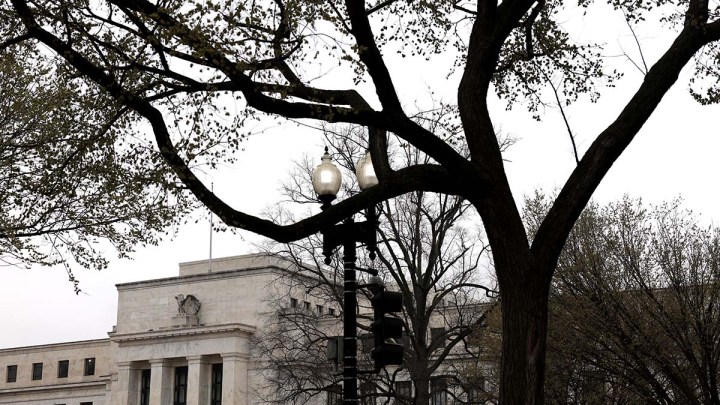
Why banks are reluctant to borrow at the Fed’s “discount window”
Why banks are reluctant to borrow at the Fed’s “discount window”

In the past several weeks, banks have been taking out emergency loans from the Federal Reserve to ensure they can cover withdrawals from customers.
In the week that ended Wednesday, banks tapped more than $152 billion from two backstop lending facilities set up by the Fed. That’s down from $164 billion borrowed the week before — a sign that the threat of more bank runs may be waning.
One of those emergency lending programs is called the discount window. And banks really try to avoid it.
When we write a check, our bank has to make sure our money is available to cover it, right? But what if the bank can’t move money fast enough for it to be there? Well, they borrow it, usually just for, like, a day and usually from other banks.
But sometimes, “the other counterpart banks are saying, ‘Oh, you’re in a little more trouble than we are comfortable with. You should go to the Fed,'” said Peter Conti-Brown, a professor of financial regulation at Wharton.
So back in the olden days — like 1913, when the Fed was created — a bank would go to an actual window at the Fed and get a loan. Problem solved! At least that’s how it used to work.
“That discount window has mostly atrophied from the 1950s until 2008,” Conti-Brown said.
During the financial crisis around 2008, of course, all kinds of banks had to use the discount window. But in normal times, the Fed has discouraged them from using it, Conti-Brown added. And banks — big ones, anyway — haven’t used it much.
The reason? It kinda just looks bad. “‘Please sir, may I have another? We’re a very poor bank and having some trouble,'” Conti-Brown said.
This image problem is very real. Bill Nelson, chief economist at the Bank Policy Institute, spent 20 years at the Fed. Some years back, a friend of his got a job as a bank treasurer.
“When he took his position, he was told if he were to end up borrowing from the discount window, there would be two phone calls,” Nelson said. “One would be from the president of the New York Fed asking what happened and the second from HR asking him to clear out his desk.”
In 2008, the Fed tried to set up other ways for banks to borrow, but it didn’t solve the stigma problem, Nelson said. “It’s a tremendous problem because you can think of the discount window, in many instances, as a safety valve.”
But it’s a safety valve that banks aren’t comfortable using enough, he added. Silicon Valley Bank could probably have had a softer landing, according to Conti-Brown, if it had been prepared to use the discount window earlier.
There’s a lot happening in the world. Through it all, Marketplace is here for you.
You rely on Marketplace to break down the world’s events and tell you how it affects you in a fact-based, approachable way. We rely on your financial support to keep making that possible.
Your donation today powers the independent journalism that you rely on. For just $5/month, you can help sustain Marketplace so we can keep reporting on the things that matter to you.












